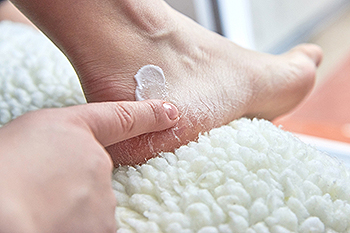
With age, the development of calluses on the heels becomes a common occurrence. These patches of thick, dead skin, often a result of the pressure exerted while walking, can lead to a condition known as cracked heels. This ailment poses risks beyond discomfort, as painful cracked calluses not only hinder mobility but also create openings for bacteria, increasing the likelihood of infection. This is particularly concerning for individuals with diabetes or peripheral artery disease, PAD, where poor circulation in the legs and feet complicates the healing process. In cases where infection is suspected, it is indicated by pain, redness, pus, or swelling. Prompt attention is necessary, especially for those with diabetes or PAD. A chiropodist may examine the infected area to indicate what measures are required. Regular check-ups and diligent foot care are essential to prevent the recurrence of cracked heels. If you have developed this condition, it is suggested that you consult a chiropodist for treatment.
Cracked heels, also known as heel fissures, can cause pain and discomfort. If your cracked heels are bothering you, please consult with Chiropodist Stephanie Poupore from North Bay Foot & Ankle. Our clinician will assess your condition and provide you with quality foot and ankle treatment.
Dry, thickened skin around the rim of the heel is typically the first sign of cracked heels. While this condition is common and usually just a nuisance, some cases can be more severe. If left untreated and as more pressure is placed on the heel, the cracks become deeper and eventually walking and standing can be painful. These deep cracks or fissures can bleed and also become infected. Those with diabetes need to be especially careful as fissures could lead to diabetic foot ulcers.
Causes
Cracked heels can be the result of several different factors, including:
Dry skin
Taking long, hot showers or using harsh soaps
Standing for long periods of time
Walking barefoot
Walking in shoes with an open back, such as sandals or flip flops
Wearing shoes that do not fit properly
Living in a cold or dry climate
Certain skin conditions, such as eczema or psoriasis
Treatment
There are many at-home treatment remedies for cracked heels. Applying moisturizers to the heel can help hydrate the skin. Soaking your feet in warm water and exfoliating them with a loofah or pumice stone can help to buff away dead skin cells. If you are afflicted with cracked heels, it is recommended that you see a chiropodist for treatment.
Prevention
You can prevent cracked heels by:
Avoiding standing in one position for prolonged periods of time
Wearing well-fitted shoes with a closed back
Washing your feet with gentle soaps and lukewarm water
Moisturizing the feet daily
If you have any questions, please feel free to contact our office located in . We offer the newest diagnostic and treatment technologies for all your foot care needs.
